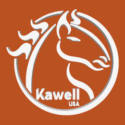The business and wealth management acumen our practicing farrier community lacks is shocking.
Generally speaking, a farrier enters the trade in his or her mid-20s, spends the first 5 years establishing a business and reputation, then enacts a laborious “sprint” for the finish line over the next 35 years, attaining a low degree of “cash wealth.” The savings are invariably stashed in a box or a savings account (not that there’s much of a difference between the two). When the farrier’s body is ready to retire, it’s likely without the means to do so unless they can become dependent on either their children or their spouse. It’s not so much a strategy than it is a stumble-to-the-finish-line exercise.
Farrier Takeaways
- It’s important to remember that cash devalues, while assets hold value or appreciate.
- You can protect your assets and future against catastrophic outcomes with various forms of insurance.
- A rated for business personal auto insurance policy is inadequate for a farrier business. You need commercial auto insurance to protect you and your assets.
Like them or not, these are the basic four imperative skills that a hoof-care business owner should possess:
1 Horse skill.
2 Hoof skill.
3 Blacksmithing skill.
4 Business skill (administrative management, wealth management and business strategy).
It is common for the farrier to focus almost exclusively on the first three, sometimes to varying degrees, and assume that they will culminate in deft execution of the fourth. It’s a little like trimming a hoof, shaping the shoe, then laying the nails and hammer together with the shoe next to the horse and expecting it to get tacked on by itself. As a farrier, you work awfully hard not to be proactive in the management of the wealth you acquire over a relatively short period.
All businesses and individuals must pay attention to four key facets of wealth management:
1 How you make your money (productivity).
2 How you manage that money (accounting).
3 How you grow that money (investments).
4 How you protect that money (insurance).
The First Facet: Productivity
The first facet of any economy is productivity: “How do you make your money?” It’s often one of the first questions we ask each other when we meet as strangers at parties. What skill do you possess that enables you to add value to the life of another person, who in turn will pay you for that experience?
In your case, it’s obvious: you keep horses’ hooves healthy. When all else is settled, it’s the person who can keep Dobbin chugging along with as few issues as possible (and possibly deliver that skill with some degree of customer service) who gets the paycheck. That’s the reason it’s so easy for farriers to concentrate the bulk of their energy on this area.
The Second Facet: Accounting
“Where does it come from, where does it go?” Managing your money is accounting where, how and why it is made and spent. There are two fundamental concepts to wrap your head around here:
1 Money in.
2 Money out.
This very important facet of wealth management is paramount to creating and administering your financial objective(s).
Where does the money come from? Which clients are your most valuable, and which are a drain on your resources and reputation?
Are you charging enough per horse to be commensurate to your skill level, while facilitating your ultimate financial objectives? Very often I talk with farriers who wear their price-per-horse as if it’s purely indicative of their standings in the ranks of other horseshoers when in reality, the price is determined by the market’s (i.e. the horse-owning public’s) appetite. If you are the only farrier in a town of 1,000 horses, you can probably stand to be really bad at your job and still charge more than average. Conversely, if you are one of 10,000 farriers in an area where there are only 1,000 horses, you might have to get competitive, either by offering improved skill or a lower price.
Where does your money go after it’s been earned? Are you paying more in servicing some clients than others? What are your largest expenses? How much are you paying to the taxman each April? This is important because taxes are your single greatest inadvertent and unintended expense.

General liability insurance is a vehicle that will take over should you be held liable for any unfortunate incident, such as accidentally burning down a client’s barn.
The Third Facet: Investment
Investment is the opportunity to take the money you have produced and grow it. A lot of farriers never quite get to this facet of consideration since the bulk of their money goes into a savings account, where it’s taxed and earns very little in interest. Many farriers are cash-rich and asset-poor. Remember: Cash devalues, while assets hold value or appreciate.
The beauty of America’s economy is that we have an exchange — the stock market. Here, you can take part in the performance of another company. This allows us all to take $1 and turn it into $10, $20 or $100.
When we invest, we achieve two things: First, we are earning money passively (i.e. you don’t have to get up in the morning and assemble laptop computers in order to enjoy Apple’s dividends.). Secondly, we are earning it without the burden of the taxation that affects our savings accounts.
Think about this: Once you’ve caught your fish, do you then leave it on the grass where animals are likely to come and scavenge it? You went through the work of reeling that bass in, do you then just abandon it, go off and tell your friends the story of the huge fish you proudly brought in? Or, do you take it home, cook it and let it feed you and your family?
To translate this analogy: Once you’ve earned your money, do you let it sit stagnant in a bank account, or does it go out into the market and grow, and feed your ambitions?
The Fourth Facet: Insurance
So now that you’ve made your money, you’ve accounted for it in the books and you’ve invested it in a brokerage account, preferably an IRA.
Now, we live in a country of liberated people who are endowed with rights, opinions and the desire to pursue happiness. We are a nation of laws. And those laws are so accessible that when we wrong someone, we are held accountable to the standard of those laws, either by criminal or civil statutes. If or when you cause harm to someone, either you pay penance in jail, or you pay out some of your money.
The fourth facet is about protecting your money, your assets and your lifestyle. You’ve worked hard to get to a place where you have things to lose, such as your new truck, your home, your boat, etc. Let’s look at how you make sure they’re not vulnerable.
What is insurance?
Insurance is protection against risk exposures.
Insurance is using other people’s money in exchange for your small, incremental contributions (premiums) to hedge against future catastrophic outcomes. Let someone else pay for your most catastrophic events (which are likely to be your most expensive events, especially when you consider that most of them are not “scheduled”).
Taxes are your single greatest inadvertent and unintended expense …
Insurance intends to indemnify you. Indemnification means “returning you to the position you were in prior to the covered event.” Life happens. Mistakes occur. What really matters is the state you are left in after the mistake occurs.
Statistics attempt to quantify the uncertainty of an event occurring in any particular risk exposure. Actuaries are experts in ascertaining risks. If you want to know how risky your occupation is, ask an insurance company for a quote. For example, if you work in a small office that you walk next door to from your home, no clients come to that office, the area has no or a very low crime rate — then you would say that the risk exposure is minimal and the likelihood of an event is slim. As a farrier, you’re driving on roads filled with lots of expensive cars, most of which are driven by people who are distracted by their cell phones. You go to people’s barns and homes where you have no idea how often the barn or home is maintained and deal with horses that are, by nature, enormously reactive.
A Farrier’s Insurance Strategy
A farrier’s insurance strategy should analyze your risk exposures. What are the risks that your business is exposed to?
1 You drive a lot. There are many bad drivers with lots of expensive cars and more than one or two ditzy teenagers texting their friends behind the wheel.
2 You work with horses. A horse is an unpredictable, large animal that could lay you up before you’re even aware that its owner just slapped it on the backside to kill a mosquito.
3 You make a pretty decent income. In today’s world where horses are more like a rider’s best friend than they are a good-looking cow with a brain the size of a walnut, you’d better believe that if you screw up its hooves too badly, someone’s going to be a little upset with you — and might even take you to court to prove the physical, emotional and monetary damage you’ve caused.
4 You work with sharp tools and fire. A lot of the barns that I used to work in would’ve cost me hundreds of thousands of dollars to rebuild if a stray spark had wafted into a pile of dry straw.
Protecting Yourself
Now that you have an idea of the risk exposures, how can you protect yourself from those exposures? There are many insurance products, and each one of them has a specific purpose. Just like you wouldn’t slap a 000 onto a Friesian because your client told you to and you wouldn’t use your pull-offs to trim a hoof, an insurance company isn’t going to use the wrong tool for a particular job either.
Don’t expect your insurance company to go along with your own interpretations of how and where a policy should work, and what it should or shouldn’t cover. The basic rule is: If it isn’t expressly described in your policy, coverage isn’t in force.
Don’t make assumptions. If you want earthquake insurance, buy it. Don’t presume that your house is going to be covered in the event of an earthquake (they ordinarily aren’t). If there is a specific product designed for a specific thing, and you feel that you are exposed to that specific risk, buy that product. Don’t assume that because your trailer is attached to your truck that the trailer is covered by your auto policy. Find the risk in your policy, and if it isn’t there, buy it. A knowledgeable broker can help you.
Based on the risk exposures listed above, farriers should protect themselves.
Health insurance. If you think you’re going to get through this career without at least one major visit to the white building, you need a reality check.
Disability insurance. You can secure these policies through employers or through the private marketplace. I’m sure you can guess which one of these two markets offer a superior product, and which one of them is cheap. Again, you’re going to get hurt. Not allowing yourself the opportunity to heal up properly while not having to worry about how you’ll pay for your mortgage, utilities or groceries can be a long-term mistake.
Commercial auto insurance. Many farriers are under the illusion that a “rated for business” personal policy is adequate. Wrong. Rated for business means that you are driving to and from work. As in, you’re a secretary who works at Boeing. Automobiles are expensive to repair, the frequency and severity of accidents are on a steep incline, and there are more cars on the road than ever before — not to mention more inept drivers out there than there were before the advent of cell phones.
General liability insurance. You and everyone around you will be protected from the “stuff” and the environment you create to do your job. A random owner trips over your cart and knocks out their front teeth? A top-rated jumping horse plows into the horn of your anvil? Your forge falls over and burns down the barn you were working in? General liability protects you. Some carriers actually have customized farrier policies that include some professional liability, which is coverage for the product of your work, so that when the upset horse owner comes after you for vet bills from that bad shoeing, your policy takes over.
Life insurance. Since we live in a super economy presently experiencing a golden era, investing money into an annuity that pays out once you expire seems to me to be a bit of a weak strategy.
Available in whole/universal or term, I personally have a term policy that will guarantee my beneficiary enough money to settle all of our debt (namely, our mortgage), tend to the costs of a funeral and give a little bump to the person who now has a child to raise on a single income. However, in terms of the second facet (see above), my money grows in a much healthier way in the market.
So with term life insurance, I can keep the payments low, invest the money I would be paying out in whole life premiums and I can always convert to a whole life policy, or just renew the term.
Keep in mind that there are no guarantees in the stock market, but a life insurance policy is just that — a guarantee.








